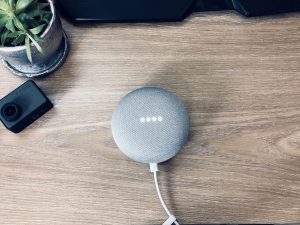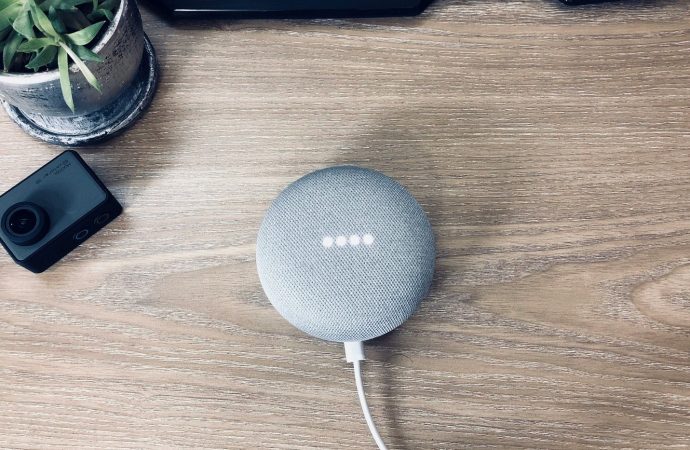Top Smart Speakers with Voice Assistants Smart speakers with voice assistants have become central to modern smart homes, offering not just music playback but also voice-controlled smart home integration, information retrieval, and more. These devices feature robust voice assistants like Amazon Alexa, Google Assistant, and Apple Siri, catering to various ecosystems and user preferences. In
Top Smart Speakers with Voice Assistants
Smart speakers with voice assistants have become central to modern smart homes, offering not just music playback but also voice-controlled smart home integration, information retrieval, and more. These devices feature robust voice assistants like Amazon Alexa, Google Assistant, and Apple Siri, catering to various ecosystems and user preferences. In this guide, we’ll explore some of the top smart speakers available in 2024, highlighting their features, pros, and cons, alongside detailed competitive and analysis tables.

Pexels.com
Smart speakers combine high-quality audio with intelligent voice assistants, enabling hands-free control over various tasks from checking the weather to controlling smart home devices. They vary in size, sound quality, and compatibility with smart home ecosystems, making it crucial to choose one that fits your needs and integrates seamlessly with your existing devices.
Top Smart Speakers with Voice Assistants in 2024
- Amazon Echo (4th Gen)
Features:
- Powerful Dolby audio for immersive sound
- Built-in Zigbee hub for smart home device control
- Compatible with Alexa voice assistant
- Supports multi-room music streaming
- Sleek spherical design
Pros:
- Excellent sound quality for its size
- Wide range of Alexa skills and integrations
- Zigbee hub simplifies smart home setup
Cons:
- Alexa app can be overwhelming for new users
- Privacy concerns with always-on microphones
- Google Nest Audio
Features:
- Rich, balanced sound with 75mm woofer and 19mm tweeter
- Google Assistant integration for voice commands
- Streamlined design with fabric finish
- Ambient IQ adjusts volume based on background noise
- Multi-room audio capability
Pros:
- Natural voice recognition and Google ecosystem integration
- Adaptive sound adjusts to room acoustics
- Seamless integration with Google Home devices
Cons:
- Limited smart home device compatibility compared to Alexa
- Privacy concerns with voice data storage
- Apple HomePod mini
Features:
- 360-degree audio with computational audio for clear sound
- Siri integration for voice commands and Apple ecosystem control
- Intercom feature for communication across HomePods
- Compact design with colorful mesh fabric
Pros:
- Superior sound quality for its size
- Seamless integration with Apple devices and services
- Privacy-focused approach with on-device processing
Cons:
- Limited smart home device compatibility outside Apple ecosystem
- Siri’s capabilities lag behind Alexa and Google Assistant
- Sonos One (Gen 2)
Features:
- Trueplay tuning adapts sound to room acoustics
- Supports Alexa and Google Assistant voice assistants
- AirPlay 2 for streaming from Apple devices
- Ethernet port for reliable connectivity
Pros:
- Impressive sound quality with deep bass and clear highs
- Versatile voice assistant options
- Multi-room audio with other Sonos speakers
Cons:
- Higher price point compared to some competitors
- Setup process can be complex for multi-room setups
Competitive Table
| Smart Speaker Model | Voice Assistant | Sound Quality | Smart Home Integration | Design | Price Range | Privacy Features |
| Amazon Echo (4th Gen) | Alexa | Dolby audio, multi-room | Built-in Zigbee hub | Spherical | $$ | Concerns with always-on microphones |
| Google Nest Audio | Google Assistant | Rich, balanced sound | Google ecosystem | Fabric | $$ | Concerns with voice data storage |
| Apple HomePod mini | Siri | 360-degree audio, clear | Apple ecosystem | Compact mesh | $$$ | On-device processing, limited outside ecosystem |
| Sonos One (Gen 2) | Alexa, Google Assistant | Trueplay tuning | AirPlay 2, Ethernet port | Modern | $$$ | Privacy options available |
Analysis Table
| Smart Speaker Model | Strengths | Weaknesses | Best For |
| Amazon Echo (4th Gen) | Powerful sound, Zigbee hub for smart home integration | Privacy concerns, overwhelming app interface | Alexa enthusiasts |
| Google Nest Audio | Balanced sound, adaptive audio, Google ecosystem | Limited smart home compatibility | Google ecosystem users |
| Apple HomePod mini | Superior sound quality, Apple ecosystem integration | Limited smart home integration outside Apple | Apple ecosystem users |
| Sonos One (Gen 2) | Impressive sound quality, versatile voice assistant | Higher price, complex setup process | Audio enthusiasts |
In-depth Reviews
Amazon Echo (4th Gen)
The Amazon Echo (4th Gen) impresses with its powerful Dolby audio, delivering immersive sound for music playback and voice commands. It integrates seamlessly with Alexa, offering a wide range of skills and smart home device control through its built-in Zigbee hub. The spherical design fits well into modern decor, though privacy-conscious users may have concerns about its always-on microphone. Overall, it’s ideal for Alexa enthusiasts looking for robust sound quality and comprehensive smart home integration.
Google Nest Audio
The Google Nest Audio excels with its rich, balanced sound and adaptive audio features that adjust volume based on ambient noise. Google Assistant integration provides natural voice recognition and seamless interaction with the Google ecosystem. While it offers excellent audio quality, its smart home device compatibility may not be as extensive as Alexa-powered devices. Users invested in the Google ecosystem will appreciate its integration with other Google Home devices for multi-room audio and smart home control.
Apple HomePod mini
The Apple HomePod mini delivers impressive 360-degree audio with computational audio for clear sound across various music genres. Siri integration enables voice commands and control over Apple devices and services, making it a compelling choice for Apple ecosystem users. Its compact design and colorful mesh fabric add a touch of style to any room. However, its smart home device compatibility is limited outside the Apple ecosystem, which may restrict its appeal to non-Apple users.
Sonos One (Gen 2)
The Sonos One (Gen 2) stands out with its Trueplay tuning, which adapts sound based on room acoustics for optimal audio quality. It supports both Alexa and Google Assistant, offering flexibility in voice assistant choice and smart home integration. AirPlay 2 compatibility allows streaming from Apple devices, enhancing its versatility. While it commands a higher price point, audio enthusiasts will appreciate its rich sound and multi-room audio capabilities with other Sonos speakers.
Conclusion
Selecting the best smart speaker with a voice assistant depends on your preferences for sound quality, smart home integration, and ecosystem compatibility. The Amazon Echo (4th Gen) is ideal for users seeking powerful sound and extensive Alexa integration, while the Google Nest Audio offers balanced audio and seamless interaction within the Google ecosystem. Apple enthusiasts will find the Apple HomePod mini appealing for its superior sound quality and integration with Apple devices, though it’s best suited for those heavily invested in the Apple ecosystem. The Sonos One (Gen 2) appeals to audio aficionados looking for exceptional sound quality and flexibility with both Alexa and Google Assistant. By evaluating the strengths and weaknesses of each smart speaker, you can choose the one that best enhances your home with intelligent audio and seamless voice assistant functionality.






















